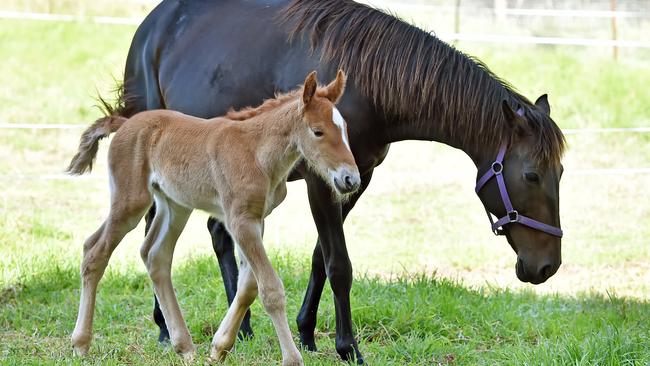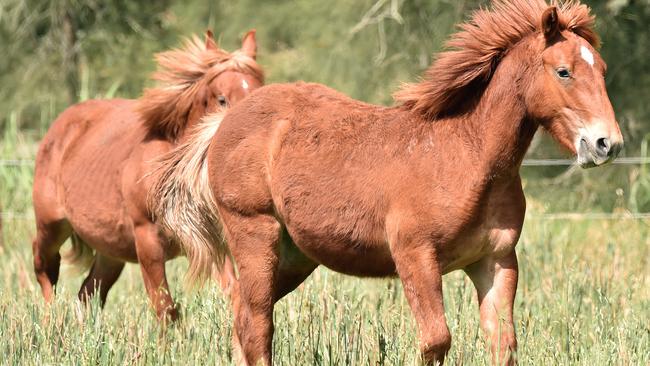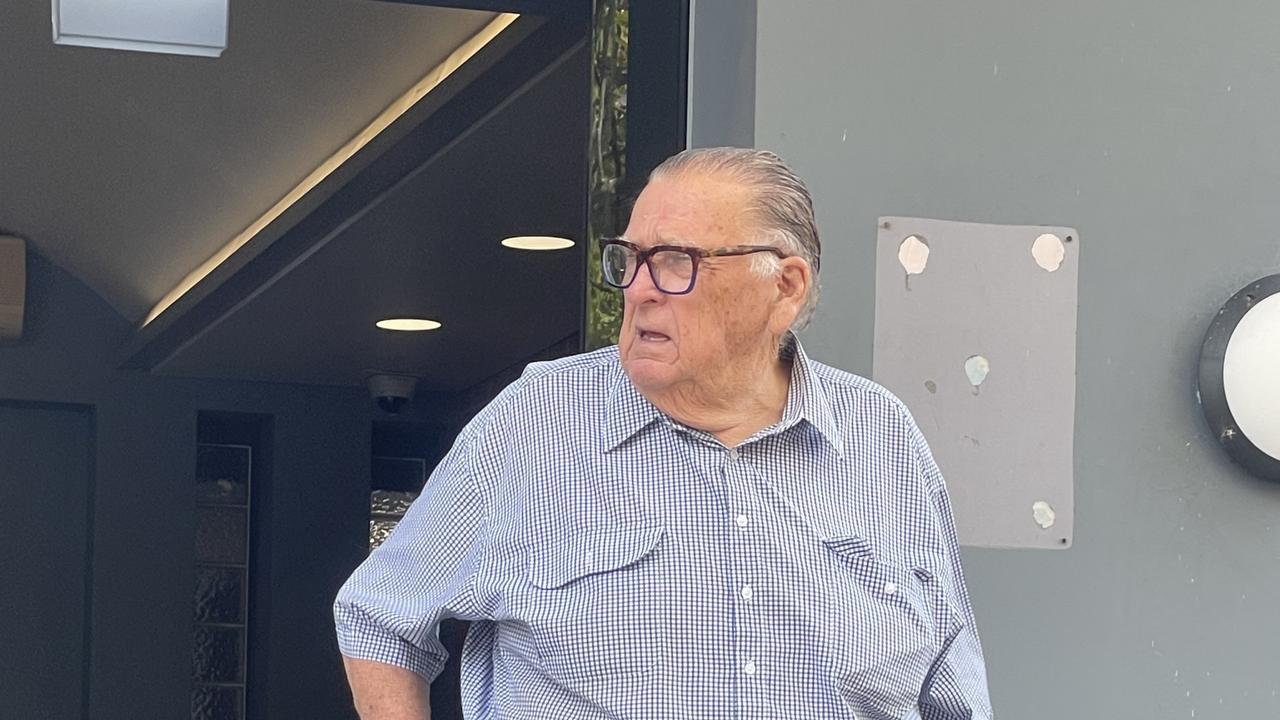Rare Suffolk Punch foal born at Glenworth Valley
FROM little fillies big draught horses grow — Glenworth Valley Outdoor Adventures welcomed the first of three Suffolk Punch foals to be born this year with the arrival of a spritely young filly last week.

Central Coast
Don't miss out on the headlines from Central Coast. Followed categories will be added to My News.
FROM little fillies big draught horses grow.
Glenwoth Valley Outdoor Adventures welcomed the first of three Suffolk Punch foals to be born this year with the arrival of a spritely young filly last week.
Suffolk Punch draught horses are among the rarest equine breeds in the world with as few as 15-20 purebreds in Australia and New Zealand.

The young filly was the second foal born to mare Annie and sire Ben and was carried to term by surrogate mum Becky, a traditional stock horse.
Horseriding manager Tina Smith said Suffolk Punch horses were originally bred in England where their large size, incredible strength and quiet nature made them highly sought after for ploughing and other farm work.
However with the onset of the industrial revolution and in the wake of both World Wars the breed fell out of favour and very nearly became extinct.

Ms Smith said Glenworth Valley started its breeding program two years ago with two mares and a stallion and hoped to bolster Australia’s dwindling stocks of purebred and three-quarter bred Suffolk Punches.
She said Suffolk Punches were very difficult to breed naturally so frozen sperm was used and the resulting embryo was artificially implanted in a surrogate mare.
Two more foals are expected to be born in December.
“The surrogate mare carries the foal to full term,” she said.
“They’re massive, up to 17 hands (178cm) and built like a machine, big, strong and robust — stronger than a Clydesdale.”
Glenworth Valley, Australia’s largest horse agistment centre, is experiencing somewhat of a baby boom at the moment with 11 mares having foaled or about to give birth in the coming weeks.
Ms Smith said the Suffolk Punch foals were easy to spot however given they were “twice the size” of other foals and “always chestnut” in colouring.



